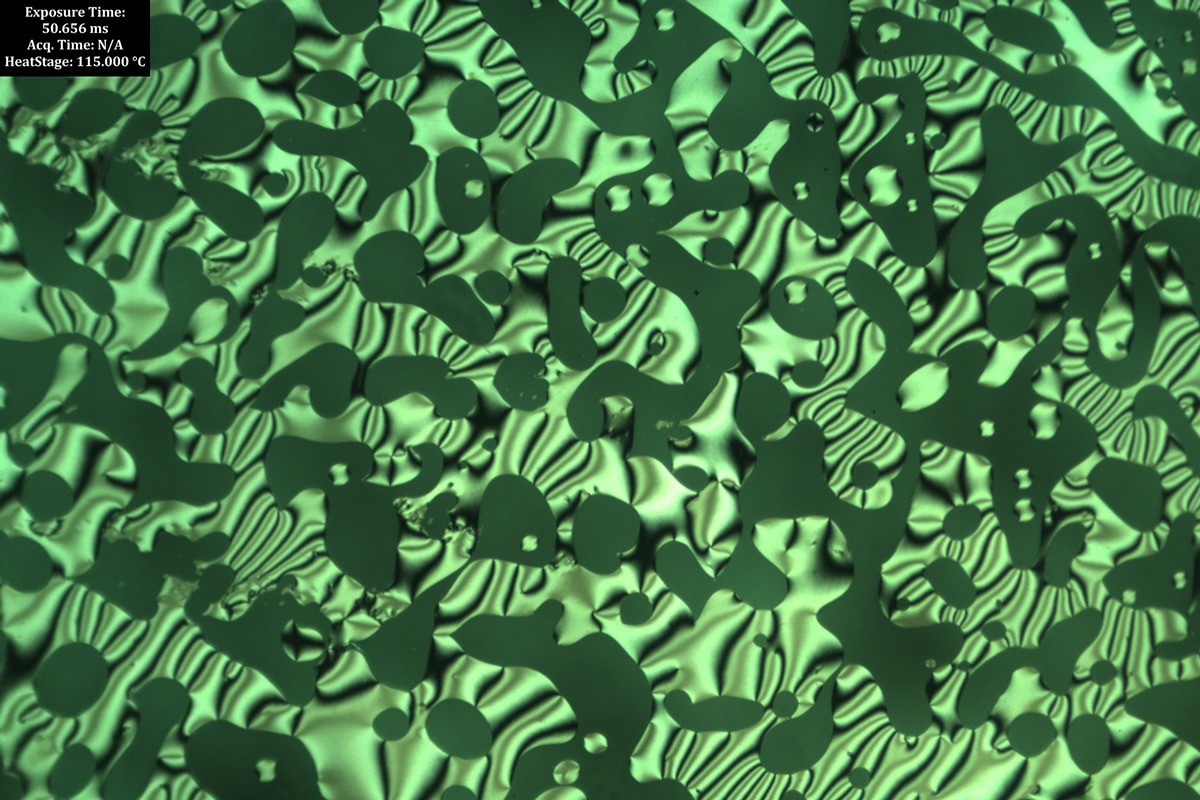Researchers at the University of Illinois Urbana-Champaign have led a new study that sheds light on the creation of semiconductor materials that possess chirality, or a non-superimposable mirror image, and can execute tasks that common silicon counterparts are unable to.

An optical micrograph showing the chiral liquid crystal phase of a polymer that researchers are exploring to produce highly efficient semiconductor materials. Image Credit: Ying Diao Lab
Chirality is a strategy adopted by nature to add complexity to structures, with the DNA double helix being the most well-known example - two molecule chains joined by a molecular “backbone” and twisted to the right.
In nature, chiral molecules, such as proteins, efficiently funnel electricity by selectively carrying electrons with the same spin orientation.
For decades, scientists have been attempting to replicate nature’s chirality in synthetic molecules. A recent study conducted by Ying Diao, professor of chemical and biomolecular chemistry, analyzes how successfully different changes to a non-chiral polymer called DPP-T4 can be used to produce chiral helical patterns in polymer-based semiconductor devices.
Solar cells that function like leaves, computers that exploit electron quantum states to calculate more effectively, and novel imaging techniques that capture three-dimensional information rather than two-dimensional information, to mention a few potential applications.
The findings of the study have been published in the journal ACS Central Science.
We started by thinking that making small tweaks to the structure of the DPP-T4 molecule – achieved by adding or changing the atoms connected to the backbone – would alter the torsion, or twist of the structure, and induce chirality. However, we quickly discovered that things were not that simple.
Ying Diao, Associate Professor, Chemical & Biomolecular Engineering, University of Illinois Urbana-Champaign
The team discovered that their “slight tweaks” created significant changes in the phases of the material using X-Ray scattering and imaging.
Diao added, “What we observed is a sort of Goldilocks effect. Usually, the molecules assemble like a twisted wire, but suddenly, when we twist the molecule to a critical torsion, they started to assemble into new mesophases in the form of flat plates or sheets. By testing to see how well these structures could bend polarized light – a test for chirality – we were surprised to discover that the sheets can also twist into cohesive chiral structures.”
The findings of the study show that not all polymers perform identically when modified to replicate the efficient electron transport in chiral structures. According to the study, it is vital not to neglect the intricate mesophase structures generated to identify unknown phases that can lead to optical, electronic, and mechanical properties never previously envisioned.
Jianguo Mei, a professor at Purdue University, and graduate student Xuyi Luo, created the polymers employed in this study. Diao is also involved in materials science and engineering, chemistry, the Materials Research Laboratory, and the Beckman Institute for Advanced Science and Technology at the University of Illinois.
This research was funded by the Office of Naval Research, the Air Force Office of Scientific Research, the National Science Foundation, and the US Department of Energy.
Journal Reference
Park, K. S., et al. (2023) Subtle Molecular Changes Largely Modulate Chiral Helical Assemblies of Achiral Conjugated Polymers by Tuning Solution-State Aggregation. ACS Central Science. doi:10.1021/acscentsci.3c00775
Article Revisions
- Jan 6 2025 - Meta Description has been updated to fall inline with Google recommendations and a malformed link has been repaired.